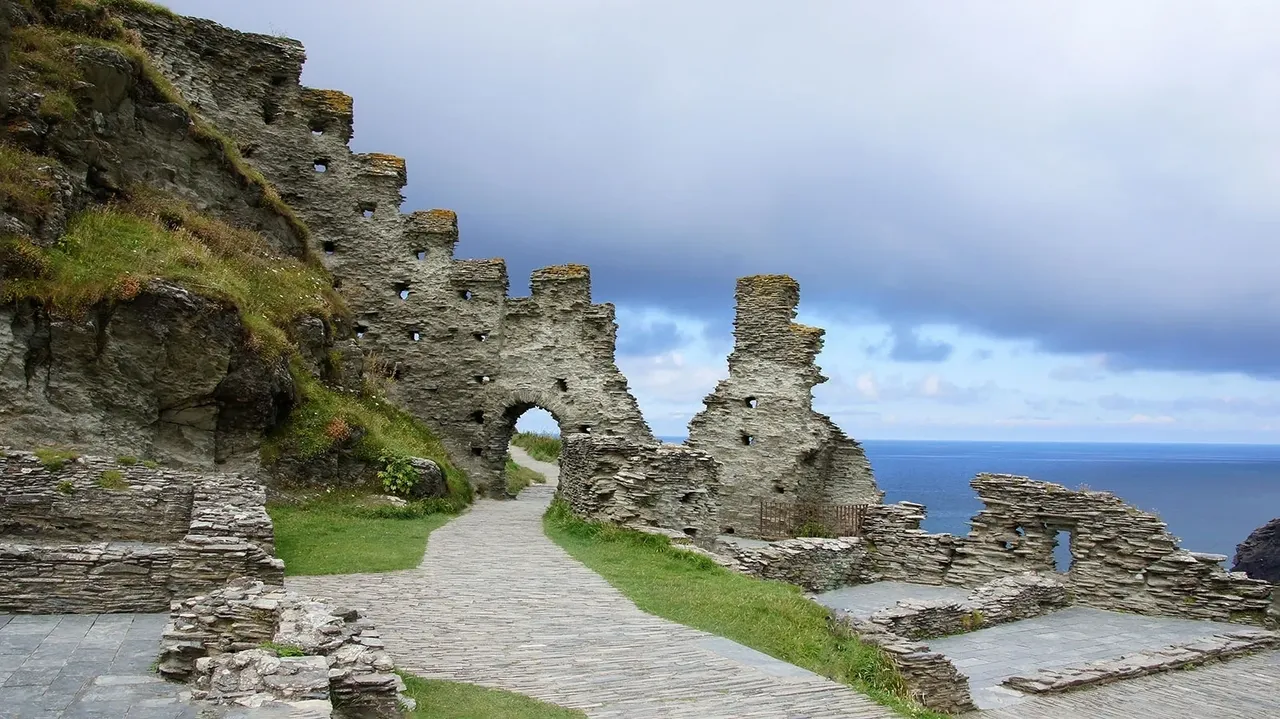Tintagel Castle, nestled on the Tintagel Island peninsula in North Cornwall, UK, boasts a rich history dating back to medieval times. Constructed by Richard, 1st Earl of Cornwall in the 13th century, the castle later fell into disrepair.

In the 19th century, archaeological exploration uncovered remnants of a high-status settlement, revealing trading links with the Mediterranean during the Late Roman period. Recent excavations unearthed a palace from the early medieval period, shedding light on its fascinating past.

Tintagel Castle is steeped in Arthurian legend, believed to be the site of King Arthur’s conception according to Geoffrey of Monmouth’s writings. Today, it remains a popular tourist destination, managed by English Heritage. In the 1st century AD, southern Britain came under Roman rule, with Cornwall falling within the administrative region of civitas Dumnoniorum. Though initially considered remote and unimportant, the region’s tin industry garnered attention in the 3rd century AD.

While no Roman-period settlement has been excavated on Tintagel Island, artifacts like Roman pottery and coins suggest habitation during the 3rd-4th centuries. Archaeologist Charles Thomas noted the presence of Romano-British pottery and coins, hinting at activity in the area, though no structures from this period have been unearthed. Additionally, finds near the Iron Gate wall suggest possible trade activity at the adjacent cove. Following the collapse of Roman control in southern Britain in the early 5th century, the region splintered into various kingdoms, including the Kingdom of Dumnonia. During this period between the 5th and 8th centuries, Tintagel Castle saw settlement activity, known as Period II.

Initially thought to be a Celtic Christian monastery, recent archaeological findings suggest that Tintagel was instead an elite settlement, possibly inhabited by Dumnonian royalty. Excavations by Ralegh Radford in the 1930s initially supported the monastery theory but have since been reassessed.

Archaeologists now believe that Tintagel served as a residence for local rulers, who likely moved around with their entourage rather than staying year-round. The site was fortified during this period, with a large ditch at the entrance, making it more defensible against invaders.

Luxury items, including African and Phocaean red slip pottery, have been discovered at Tintagel Castle, suggesting extensive trade connections with the Mediterranean during the early medieval period. Archaeological findings, led by Charles Thomas, reveal a remarkable quantity of imported pottery, indicating significant maritime activity at the site. Recent excavations funded by English Heritage in 2016 and 2017 uncovered the remains of a 5th or 6th-century palace, along with more pottery shards and inscribed slate. These discoveries challenge previous notions about literacy levels in post-Roman Britain. The ongoing five-year project aims to publish its findings in 2021.

Interest in the site’s Dark Ages history has surged following these discoveries, with television documentaries exploring new theories about Early medieval Britain. Displayed findings at Tintagel Castle offer visitors a glimpse into the region’s rich past and its enduring connections to the wider world.

